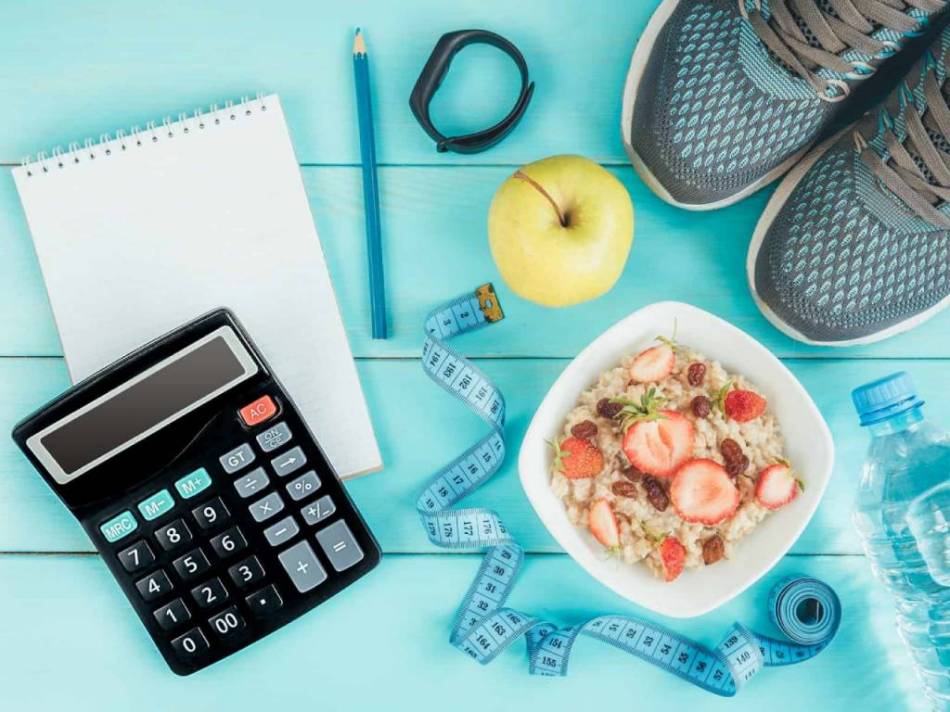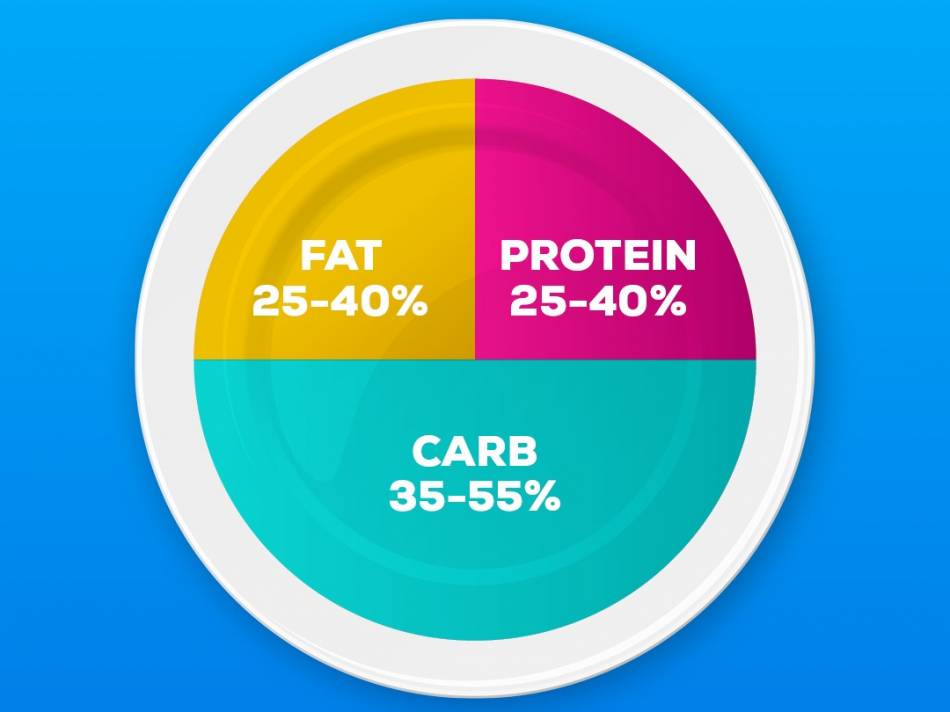
Meal planning: Create your own meal plan!

Although the first thing people think about when it comes to achieving their fitness goals is their workout, few realize that a meal plan specially customized to their needs and daily activity does most of the job; 80% of the results can be drive just by the diet. In this article we help create your own meal plan.
Benefits of a personalized meal plan
Fitness goals are an interesting equation that involves important variables such as exercise, diet and regeneration. From this equation, the 80/20 rule could be easily applied, meaning 80% of the results are brought by the diet and 20% from the exercise and regeneration. Naturally, this is simply a statement to highlight the importance of diet, as it is impossible to measure actual percentages, nevertheless, diet is still the key player for anyone’s fitness goals and no workout plan is going to achieve its best potential if there is no nutrition to back it up.
The problem is, once someone realizes the importance of following a diet, the immediate solution is heading to Internet to look for a fix-calorie meal plan. Although this isn’t a wrong option and there are plenty of well-designed alternatives on the web, those are still not the best option. Why? Because they aren’t personalized.
|
Every one has a different level of activity, everyone has a different metabolic rate, and everyone has different diet preferences. A successful meal plan is one that successfully covers these three, being personalized to one’s needs. |
On top of that, following a simple web diet fails to explain the reasoning behind it, which is risky when people are willing to go for extreme diet trends without thinking of the consequences those can bring to their overall health. For example, a 1.200-calorie diet is not for everyone and it only certain people with a very good physical condition would be able to follow it without putting their health in danger. Also, diet and nutrition are not static, they evolve and develop along your fitness journey, but most standard online diets fail to work as a long-term strategy to achieve your goals. Every body is different, and has different needs at different given times.
A personalized plan is the most effective because it sets you up for success, is full of variety, is designed for your lifestyle and daily activity, works specifically for your body, and brings better results.

Let’s begin – Plan your own diet plan!
Before we start creating our own meal plan, there is some preparation to make our job easier. Here are some things to keep in mind:
-
Calendar: Grab a calendar and write down what your general schedule is on a normal week. At what time do you wake up? What is your office schedule? When do you workout? When are you rest days? When is your lunchtime? Anything that is important to know when you’ll be eating. And don’t forget to add a cheat meal, those are also important for motivation.
-
Preferences: Make a list of the foods you like to eat and the ones you don’t enjoy that much. It will help you to know what food should definitely be included, it is important for you to enjoy your food.
-
Apps: Calorie calculating apps are a great tool and easily available these days. Whether it is a simply app to register all the food you eat to know how many calories you are consuming, or if you want to get a smart watch that will tell you how many calories you are burning, your activity levels, etc.
-
Nutritional facts table: You’ll get half of the job done if you know the nutritional facts of different foods (protein, carbohydrates and fats). There are many tables available on the Internet and, once you know your nutritional needs, you just need to choose the source.
Start with calorie calculation
Step 1: Calculating the BMR
First step to calculate how many calories need to be consumed with the meal plan is to know your BMR (basal metabolic rate), there is a standard equation that will give you an approximate number according your age, height and current weight.
The Harris–Benedict formula:
|
Male BMR = (10 x Weight in kg) + (6.25 x Height in cm) – (5 x Age in years) + 5 Female BMR = (10 × weight in kg) + (6.25 × height in cm) – (5 × age in years) – 161 |
Male BMR = (10 x Weight in kg) + (6.25 x Height in cm) – (5 x Age in years) + 5
Female BMR = (10 × weight in kg) + (6.25 × height in cm) – (5 × age in years) – 161
For example: Andrew is a 31 years old male, he is 173 cm and weights 71 kg. His formula would look like this:
|
=(10*71)+(6,25*173)-(5*31)+5 |
Andrew’s BMR is 1641, rounded to the nearest whole number, meaning he should eat 1641 calories per day to maintain his current weight, assuming he has no physical activity. But, unless he spends every day on the couch, this number needs to be adapted for his daily activity like his type of job and his training habits.
Step 2: Calculate the TDEE
To calculate the TDEE (Total Daily Energy Expenditure) we need to think how active Andrew is: Does he have a job in construction with constant physical activity? Or does he spend his day sitting at his office desk? How many times is he training per week? This activity level should be based on how active you currently are, not how active you’d like to be. This information will be used like this:
Activity Level 1 (Little or no exercise): TDEE = 1.2 x BMR
Activity Level 2 (Light exercise / 1 to 3 days per week): TDEE = 1.375 x BMR
Activity Level 3 (Moderate exercise / 3 to 5 days per week): TDEE = 1.55 x BMR
Activity Level 4 (Heavy exercise / 6 to 7 days per week): TDEE = 1.725 x BMR
Activity Level 5 (Intense exercise / Daily): TDEE = 1.9 x BMR
If we think that Andrew has a normal 8 hours sitting job, trains 3-4 times a week with the additional cardio he might do after each workout, his activity level is number 3.
|
=1641 x 1.55 |
Andrew’s TDEE is 2544 calories, which means that in order to maintain his weight, this is the amount of daily calories he needs to plan with.
But what happens if Andrew wants to gain muscle? Or, if he wants to lose weight? The third step is to calculate the amount of calories needed according to Andrew’s fitness goals.
Step 3: Adapt to fitness goals
The principles are simple:
-
For a bulking phase, Andrew will need to increase his amount of daily calories by 15%, meaning he’ll now consume around 2.926 calories per day in order to increase his muscle mass.
-
For lean muscle growth, Andrew will need to increase his amount of daily calories by 10%, meaning he’ll now consume around 2.798 calories per day for a steady muscle gain with minimal fat storage.
-
To maintain weight, as mentioned before, Andrew will simply have to focus on his TDEE and consume around 2544 calories per day.
-
For weight loss, a calorie deficit of 500 calories is appropriate for most people, or in Andrew’s case, a total of 2044 calories per day.
Avoid hunger – divide daily calories properly
Here is where your calendar will come in handy. It has been proven that eating 3 large meals versus eating 6 smaller meals represents no difference when it comes the metabolic rate, although this is a common myth. In this part, what you are looking for is to avoid hunger and making sure your nutrient intake happens throughout the day.
Hunger can cause unnecessary snacking and, if a day is full without the chance to have lunch, for example, here is when you can use your meal planning to know what to add as a quick and easy snack that will still give you the nutrients you need while on the go. It is all a matter of splitting your calories and giving your body constant sources of energy not only keep you satiated, but also to provide high quality nutrients in the right macronutrients distribution.
What kind of food should I eat?
Once you know how many calories you need to eat and when, the final step is to decide what to put on your plate and how much of it. Here is when we plan the macronutrients; proteins, fats and carbohydrates. Different fitness goals have different macronutrients needs:

Going back to Andrew, if he is going to eat a 500 calorie meal, it would mean that his plate should look like this: 175 calories from protein, 100 calories from fat and 225 calories from carbs. But we measure food in grams, right? Here is the amount of calories per gram of each macronutrient:
-
Carbohydrates: One gram contains four calories
-
Proteins: One gram contains four calories
-
Fats: One gram contains nine calories
Based on this, Andrew’s plate will look like this: 44 g of protein, 11 g of fat and 56 g of carbohydrates.
Now it is just a matter of choosing the best sources of each macronutrient, using that list of favorite foods and using the healthy options to create a meal plan that suits your needs and that you enjoy, this way dieting isn’t a sacrifice (as long as you make responsible decisions, of course).
Let’s take a look at the recommended sources for each macronutrient.
Carbohydrates (complex sources):
-
Peas, beans, and other legumes
-
Whole grains
-
Breads and cereals
-
Rice
-
Starchy vegetables
-
Pasta
-
Chicken breast
-
Turkey breast
-
Red meats (these are higher in fat)
-
Tuna
-
Salmon
-
Eggs
-
Low-fat dairy products
Fats:
-
Nuts
-
Seeds
-
Plant-based oils, such as olive oil
-
Fatty seafood (e.g., salmon and tuna)
-
Avocado
DON’T FORGET TO DRINK ENOUGH!
Water is essential for human life. It represents between 50% and 70% of our body weight and it is crucial for most of our vital body functions. Muscles contain 70-75% of water so, if a healthy and pumped muscle is what you are looking for, water is a strong ally.
Not drinking enough water can cause fatigue, constant headaches, dry lips, premature aging, dizziness and slow metabolism. While benefits of drinking water include elimination of toxins, freshening up the brain, supporting metabolism, younger and hydrated skin, neutralized pH in the body and improving muscle tone.
Let’s count and write you own meal plan!
|
In summary, to make your meal plan you will split your final daily caloric needs into the amount of meals you want to have per day, then you will distribute the calories in the respective macronutrients and, finally, you’ll choose the best sources in the respective amounts. |
Extra recommendations:
-
Save your favourite recipes to an app/excel file to make easier to copy and paste next time
-
Weight a few veggies before start planning to make sure about the right amounts
-
Prepare your meals for 2 or 3 days in advance, you will save time and you’ll be sure to be meeting your calorie needs if you are eating the same for a couple of days.
-
Explore different ways to prepare your meals, it will help you add variety to your meal plan while still keeping up the same ingredients over and over again.
-
Take fitness supplements, they are excellent options to meet the calories needed in your meal plan and also to keep up with your macronutrients intake.
-
Don’t forget to re-do your calculations every now and them, as your calorie needs will change based on the results of your workout and your meal plan.
-
Listen to your body and adapt your numbers to what works and what doesn’t work for it. Remember, every body is different.
